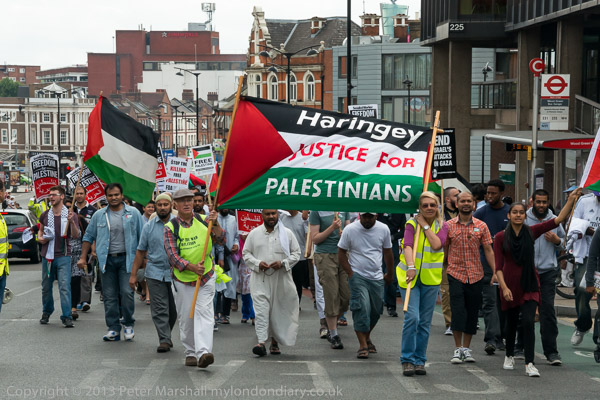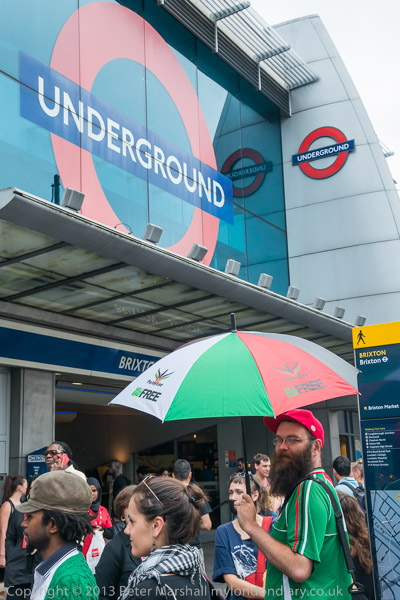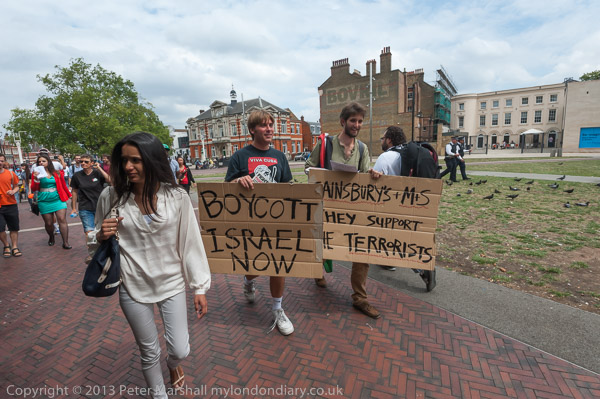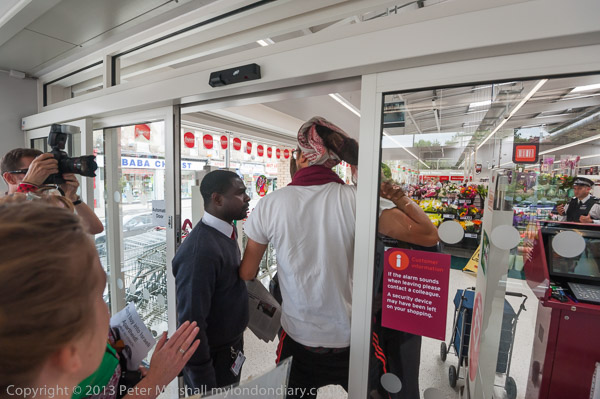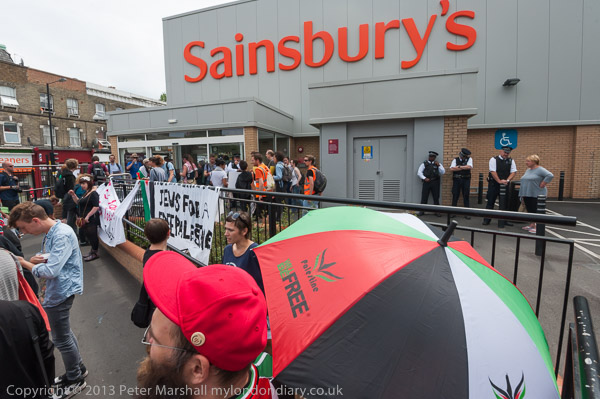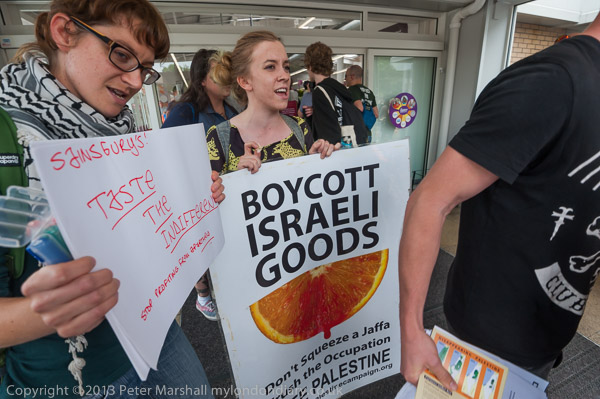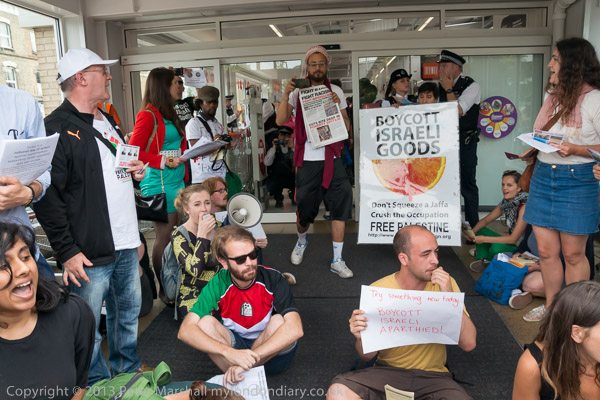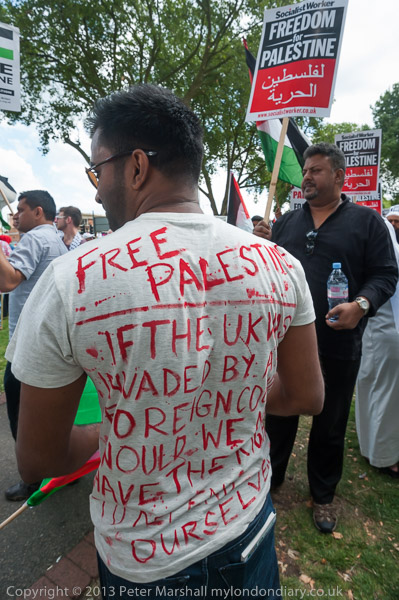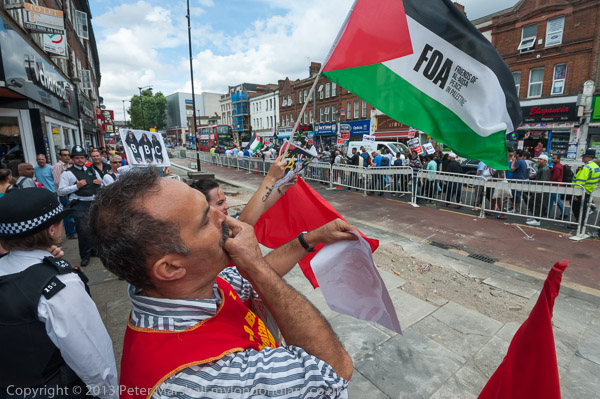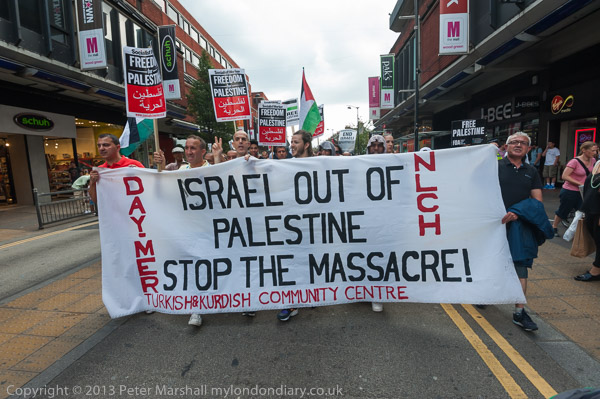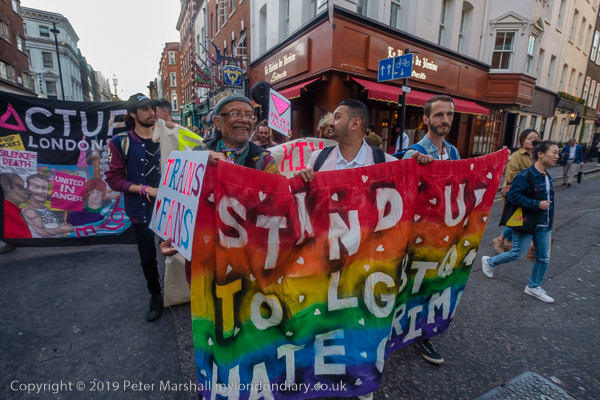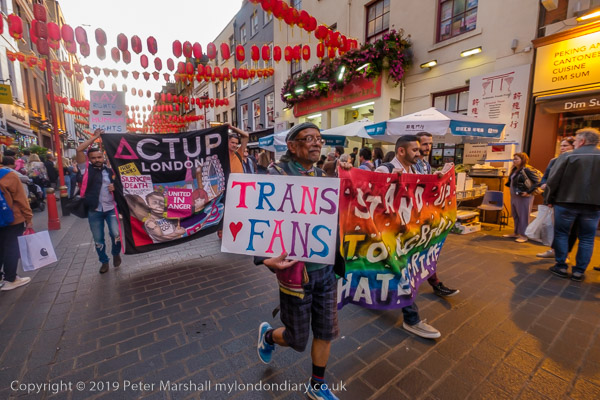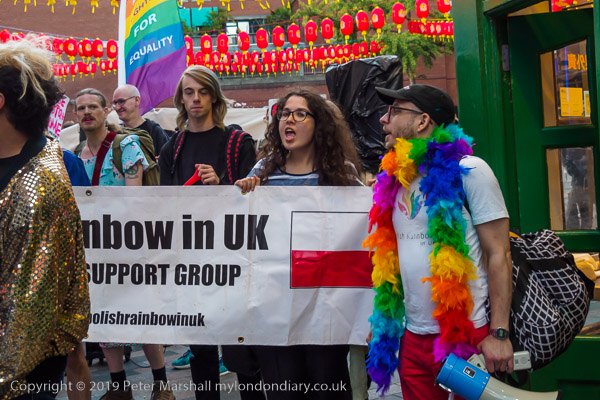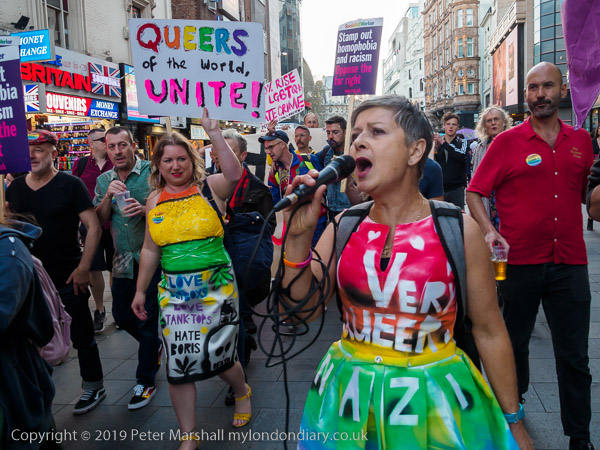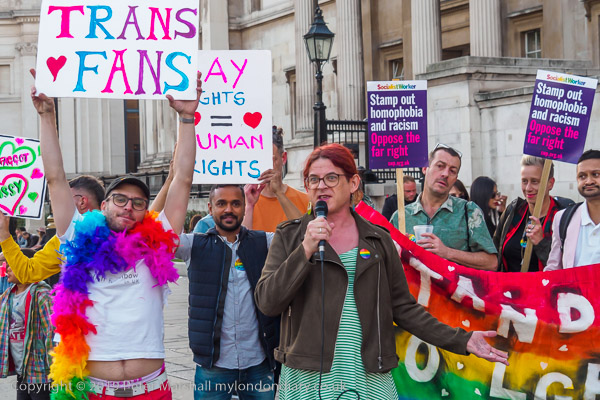One of my busier days in London was Saturday 27th October 2007, when I began with a trip to Hoxton to collect and take home some pictures from a group exhibition, then travelled back into the centre of London for a number of events. The main protest I covered was the annual UFFC march against deaths in custody, but there were also Kurds protesting against Turkish army attacks on them in Northern Iraq, campaigners calling for a Brexit referendum, an anti-abortion rally and peace protesters around Parliament where I also photographed a new statue in Parliament Square. I ended my working day with a Halloween Zombie Crawl.
Here’s what I wrote back in 2007, with minor corrections including normal capitalisation and some changes of tense – and I’ve included some headings and pictures. As usual there are many more pictures if you follow the links to My London Diary.
On saturday, everything was happening. I had to run around to start with to collect my unsold pictures from the City People show at the Juggler in Hoxton. Fortunately I’d sold one of my four pictures, so that made them easier to carry, but it was a rush to be back in the centre of London and I had to more or less miss the demonstrators who wanted a referendum on leaving the European Union.
Protest Against Custody Deaths – Trafalgar Square & Whitehall, Saturday 27 Oct, 2007
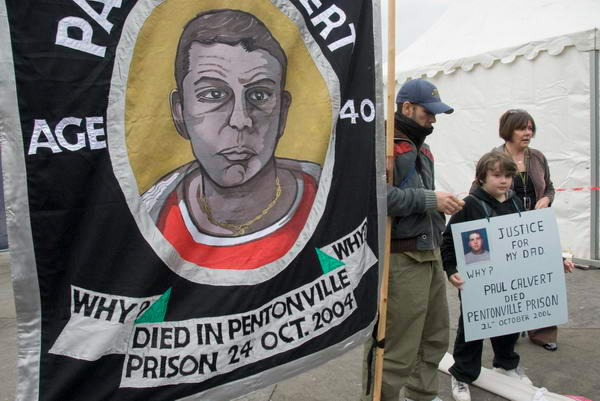
Instead I started at Trafalgar Square, where the annual event remembering those who have died in custody was taking place, organised by the UFFC, families and friends of those killed.
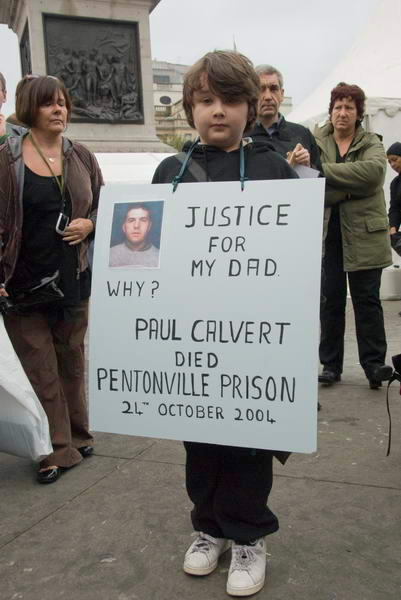
It’s an occasion that always shocks me by the sheer number of people who have died in such disgraceful or suspicious circumstances, in police cells, in prisons and elsewhere. It’s an event I sometimes find it hard to photograph, both emotionally and physically – thankfully autofocus works even when your eyes are filling with tears.
more pictures
Kurds Demand – Stop Turkey – Trafalgar Square, London. 27 October 2007
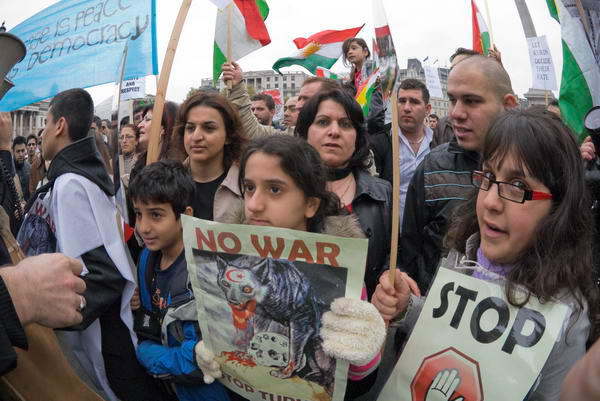
While that demo was getting ready to march, a large crowd of Kurds swarmed into Trafalgar Square and held a short rally, protesting against the Turkish government’s approval of incursions into Northern Iraq to attack the PKK there. Both the Kurds and the Armenians have suffered greatly at the hands of the Turks (who in turn have been rather screwed by the EU over Cyprus.)
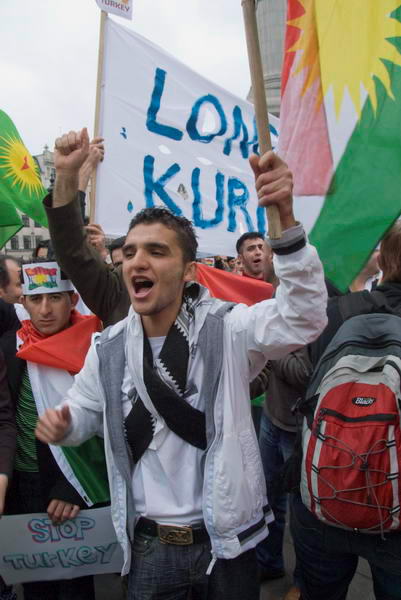
It was a typically exuberant performance, and one that I enjoyed photographing, but rather a distraction from the family and friends event.
more pictures
Pro-referendum on Europe Rally – Old Palace Yard, Westminster. 27 October 2007
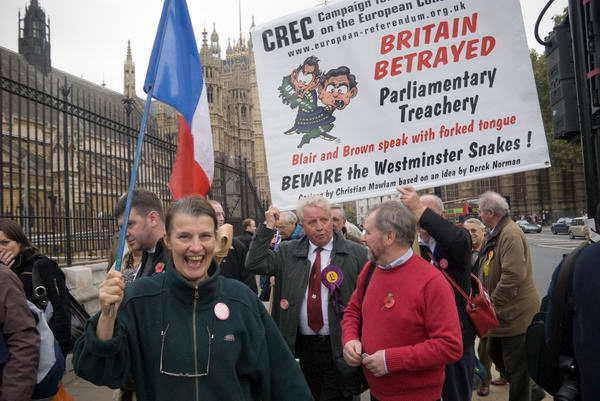
There seems to be hiatus in the UFFC demonstration, so I caught a bus down Whitehall. Walking along to Old Palace Yard I passed a few of the pro-referendum demonstrators, though some others had stayed to join in the anti-abortion protest.
a couple of pictures
Anti-Abortion (Pro-Life) Rally – Old Palace Yard, Westminster. Saturday 27 October, 2007
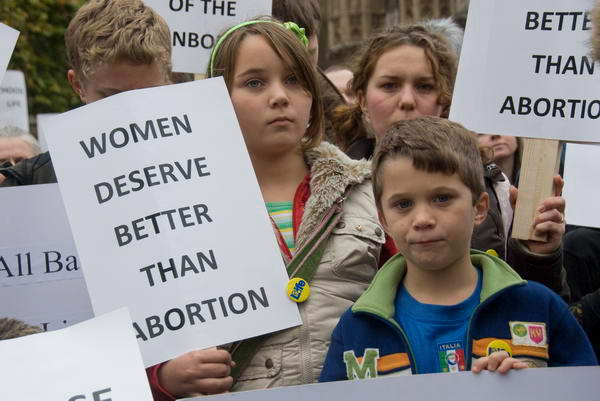
This was rather smaller than I’d expected, perhaps around 500 people, although it was the only event that made the BBC news bulletins I heard when I got home later in the day.
more pictures
Lloyd George – Parliament Square, London. Saturday October 27, 2007
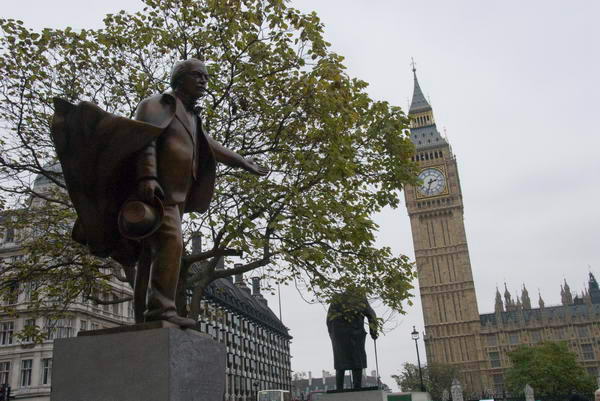
I listened a little to the speeches, but then went to Parliament Square to take a look at the new statue of Lloyd George – which failed to impress me. Of course he was long before my time – although I did have a landlady as a student in Manchester who had worked as a secretary for him – but somehow I feel the statue trivialises him, looking rather like an enlarged version of a plastic figure you might find in a box of cornflakes rather than a statue of a Prime Minister.
another picture
Peace Train – Parliament Square, Westminster. Saturday October 27, 2007
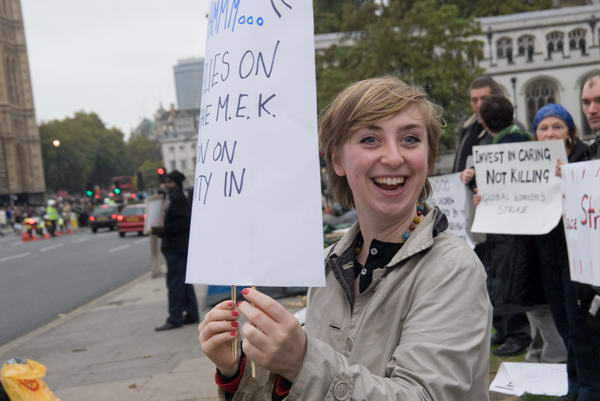
The Peace Train is beginning to form a protest in Parliament Square and I go along to talk to them and take a few pictures.
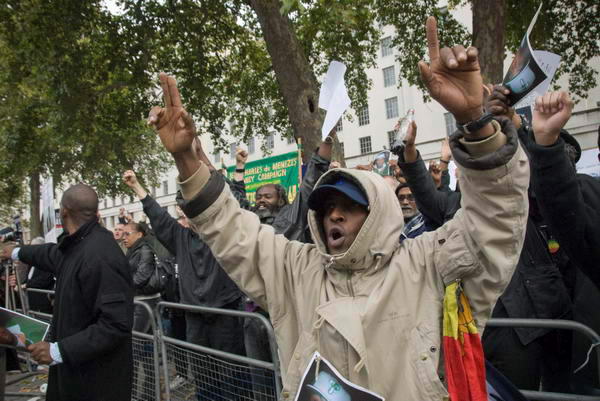
I rejoin the ‘Famiilies and Friends’ march now making a considerable protest opposite Downing Street, where a delegation has permission to deliver a letter to the prime minister’s residence at No 10. It takes a lot of argument before the police let them in despite this.
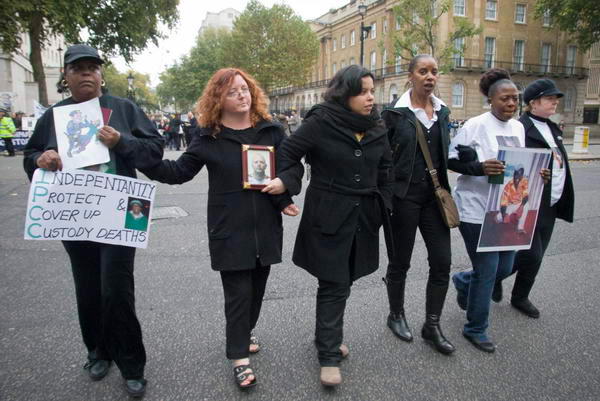
For some reason the police decide not to allow those with press cards into the street in the normal way. I don’t like going in – the security checks are a nuisance and being restricted to a pen on the other side of the street is normally hopeless, but I think its a matter of principle that access should not be unreasonably prevented – as it was for this event, even if personally I don’t particularly want to take advantage of it.
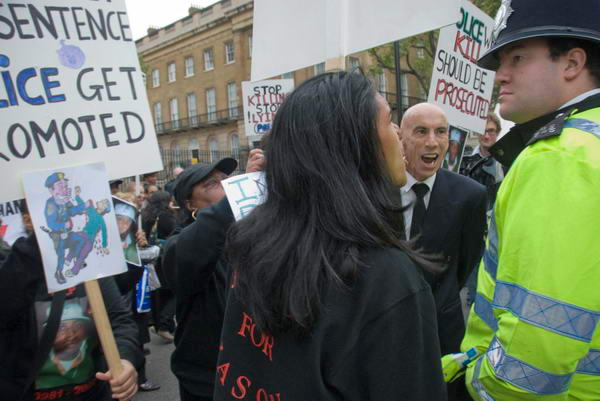
By the time the deputation emerge, the mood on the street is getting rather angry. One young policeman is getting surrounded and insulted and is trying hard to ignore it. A few minutes later a motor-cyclist foolishly stays in the route of the march, and is soon surrounded by angry people. He has to be rescued by his colleagues.
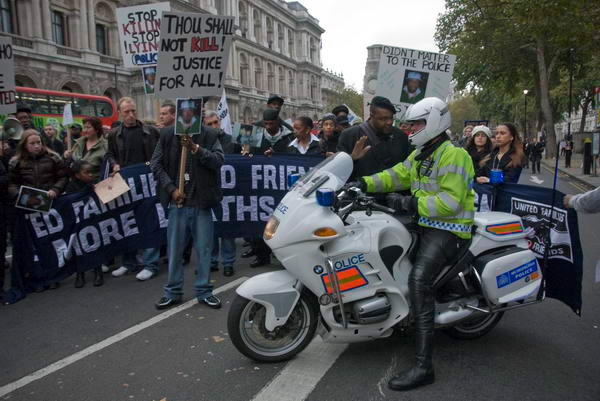
There are police who are racist, who are thugs, who are bullies. Too many who have got away with murder, often thanks to covering up or a lack of diligence in investigation by their colleagues. If it were not so, there would be no demonstration. But there are also officers who do their best to carry out a difficult and necessary job in a decent, reasonable and even-handed way – even though they may sometimes get disciplined for doing so. Those who bear the brunt of considerable and understandable hate directed against the police at a demo like this are not necessarily the guilty.
more pictures
Crawl of the Dead IV – City and Southwark, London. Saturday October 27, 2007
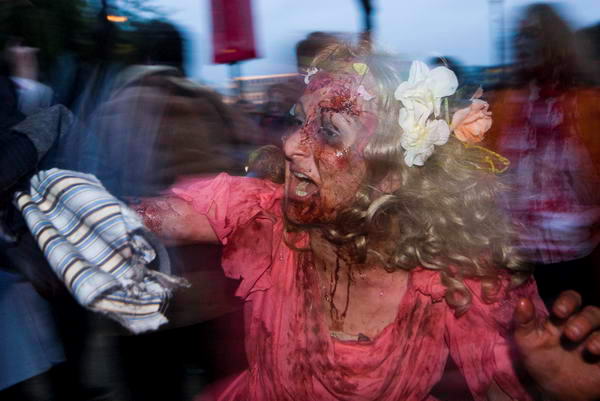
It’s time for me to leave and make my way to the City of London, where this year the zombies are starting their walk at a pub on Ludgate Hill. I go into the pub and talk to some of them and take photographs, and am gratified to find that quite a few have seen my pictures from around Oxford Street last year.
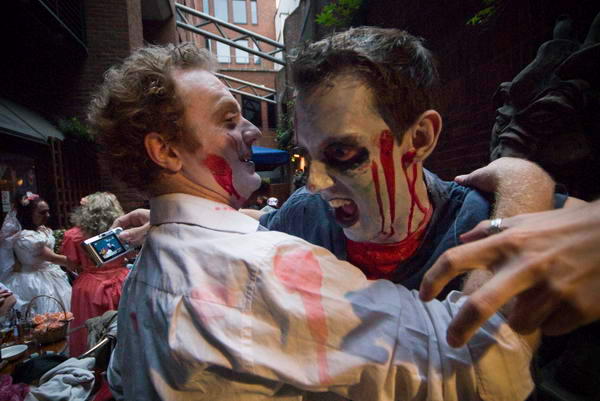
By the time they emerge from the pub it is getting dark, and my flash by now is refusing to work at all. I have to make do either with available light (and there isn’t a lot) or the pretty useless camera built in flash, but I still manage to get a few decent pictures, even though some are rather noisier than I’d like.
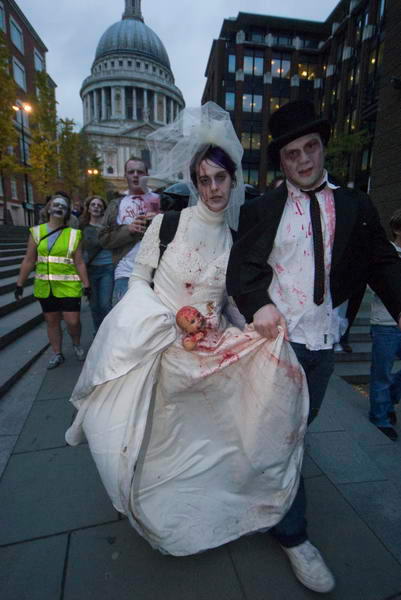
There are quite a few people around as we go over the Millennium bridge, and more in front of Tate Modern, where zombies decide to play dead for a while. Then we visit the famous crack in the turbine hall, coming out towards the Founder’s arms, where I made my goodbyes and turned for home.
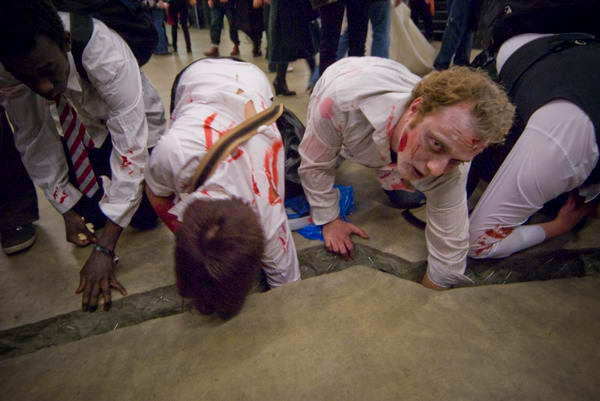
More pictures on all these on My London Diary:
against deaths in custody
kurds demand – stop turkey
for a euro-referendum
anti-abortion (pro-life) rally
lloyd george statue
peace train
crawl of the dead iv
